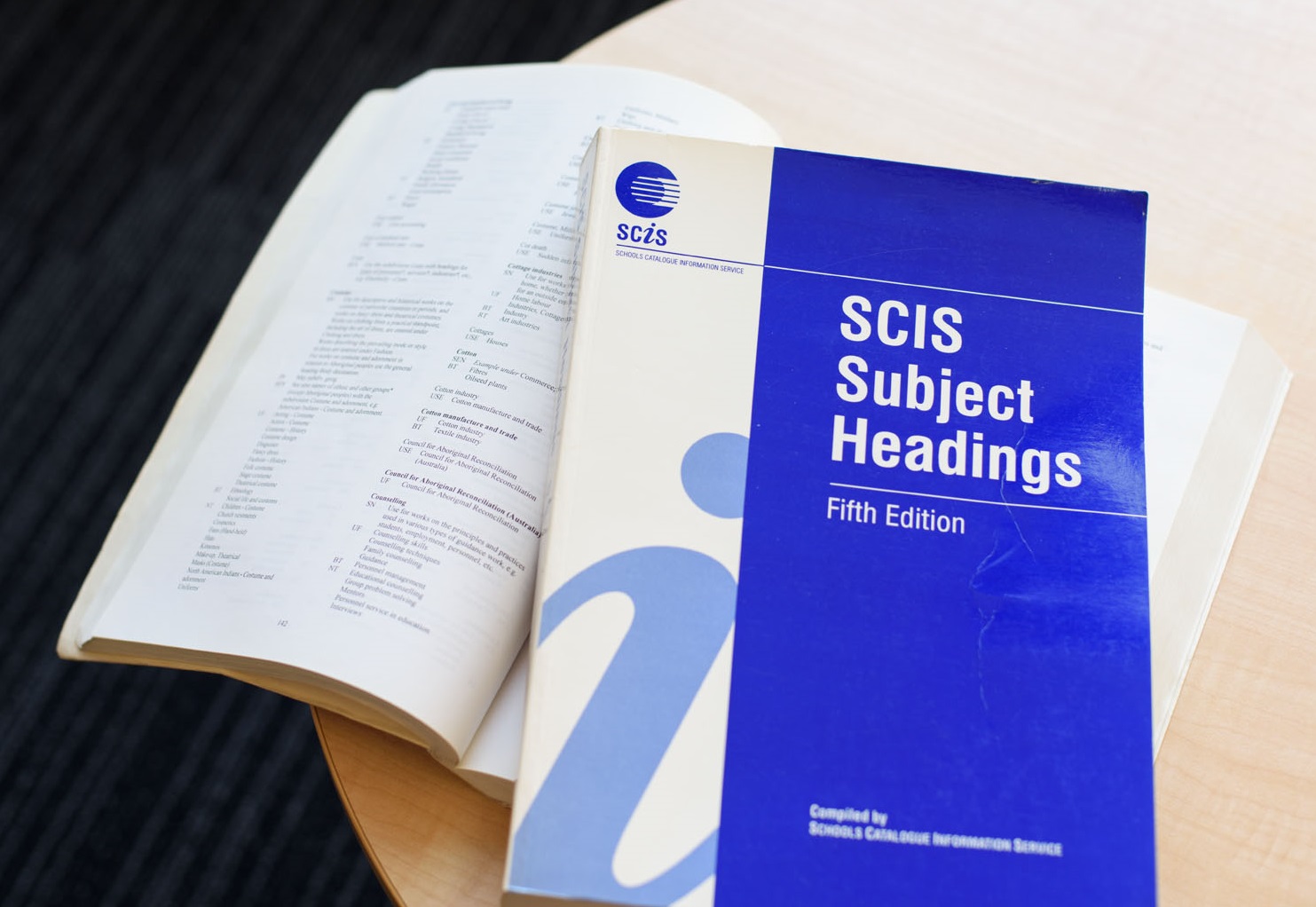About
Schools Catalogue Information Service (SCIS) is a business unit of Education Services Australia (ESA), a not-for-profit company established by all Australian Ministers of Education. ESA supports delivery of national priorities and initiatives in the schools, training and Higher Education sectors.
SCIS is a central cataloguing agency that provides school libraries with access to catalogue records for print and digital content. Access to a central database means that cataloguing effort is not duplicated across schools, saving time and improving efficiency. SCIS Data includes the option of full or abridged Dewey and SCIS subject headings which have been created specifically for use in the education context.
SCIS also maintains Authority Files, a file of all approved SCIS Subject and Name Headings that provides library users with the optimal search experience; and Digital Collections, which allow schools to import catalogue records for educational websites, apps, ebooks and digital videos into their library management systems.
SCIS is supported by a team of experienced cataloguers across Australia and New Zealand. High-quality catalogue records are created to the SCIS Cataloguing Standards, which use:
- The Resource Description & Access Toolkit (RDA)
- SCIS authorised headings
- Schools Online Thesaurus (ScOT)
- Dewey Decimal Classification and Relative Index 23rd ed.
- Abridged Dewey Decimal Classification and Relative Index 15th ed.
The SCIS journey
1969: Federal funding for school libraries by the Australian Government commences. This leads to formal discussions on the potential benefits of implementing a centralised cataloguing service for schools.
1972: A feasibility study commences to investigate the provision of automated library services for the South Australian Education Department.
1974: The Commonwealth Schools Commission initiates the first study to analyse the concept of a national schools’ cataloguing service.
1976: The South Australian Education Resources Information System (SAERIS) is implemented. This was an outcome of the feasibility study undertaken by the South Australian Education Department in 1973.
1977: The Commonwealth Schools Commission initiates a second study to analyse the concept of a national schools’ cataloguing service. SAERIS commences their automated central cataloguing service with the delivery of the first set of microfiche containing 23,500 titles to South Australian schools, and the commencement of a limited trial of a card service.
1978–1980: A national pilot study, called the Australian Schools Catalogue Information Service (ASCIS) and funded by the Commonwealth Schools Commission, is approved and carried out. This study successfully demonstrates that a national scheme for an automated central cataloguing service is feasible.
1982: A National Planning Group is officially formed to sort and coordinate contributions from all sectors of education for the establishment of ASCIS.
1983: Staff are appointed to form the ASCIS Secretariat and premises found in Melbourne.
1984: ASCIS is formally established, and a national cataloguing scheme for Australian schools is agreed on. The development of suitable computing facilities and subsequent building of the ASCIS database begins.
1990: ASCIS is subsumed by the Curriculum Corporation, an organisation established by the Australian state and territory education systems and the Commonwealth government to facilitate and publish educational material.
1992: New Zealand joins the Board of Curriculum Corporation and ASCIS undertakes a name change to become what we know today as SCIS – Schools Catalogue Information Service.
1993: Access to the SCIS database is provided to schools remotely using SCIS Dial-Up to check for resources.
1995: SCIS Dial-Up becomes SCIS Online (via SCIS LINK). SCIS moves from using microfiche to SCIS on DISC to deliver catalogue records to schools.
1996: SCIS moves its database to the Voyager Integrated Library Management System (ILMS) platform.
1997–1998: SCIS on DISC is phased out to make way for SCISCD.
1998: SCISWeb is introduced, allowing schools to search the SCIS database online, and to place online orders for records and then download them.
1999: Most schools have transitioned to using SCISWeb to obtain SCIS catalogue records. This eliminates the need for dial-up access and the production of microfiche and catalogue cards.
2004: SCISCD is phased out.
2006: ScOT terms are introduced to SCIS records.
2013: SCIS commences RDA implementation.
2017: SCISWeb is rebranded as SCIS Data.
2018: Series authority files introduced.
2021: SCIS moves its database from the Voyager ILMS platform to Koha, an open-source library system, supported by Catalyst.
SCIS and the future
SCIS subscriber numbers have continued to increase. The majority of Australian and New Zealand schools, and many international schools, now use SCIS as their primary source for catalogue records.
SCIS is constantly looking to improve the relevance and quality of SCIS Data for schools across the world. If you have any suggestions for improvements, please feel free to contact us. We love feedback.
SCIS is a business unit of Education Services Australia (ESA). ESA acknowledges the Eastern Kulin Nation, Traditional Custodians of the land on which our head office stands, and pays our respects to Elders past and present. We recognise the Traditional Custodians of Country across Australia and their continuing connection and contribution to lands, waters, communities and learning.
